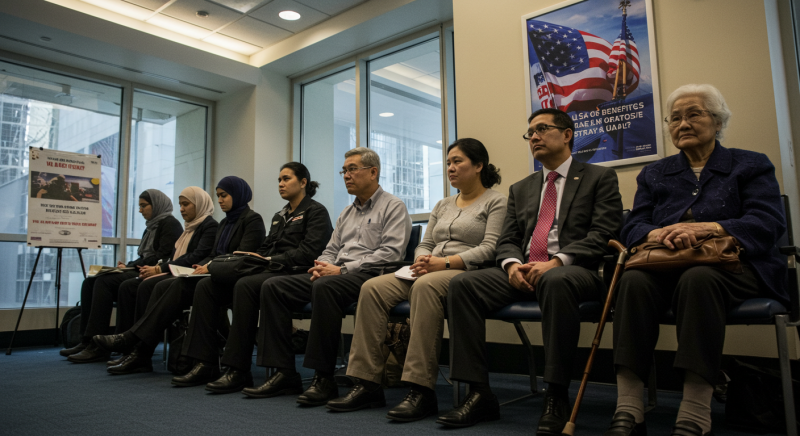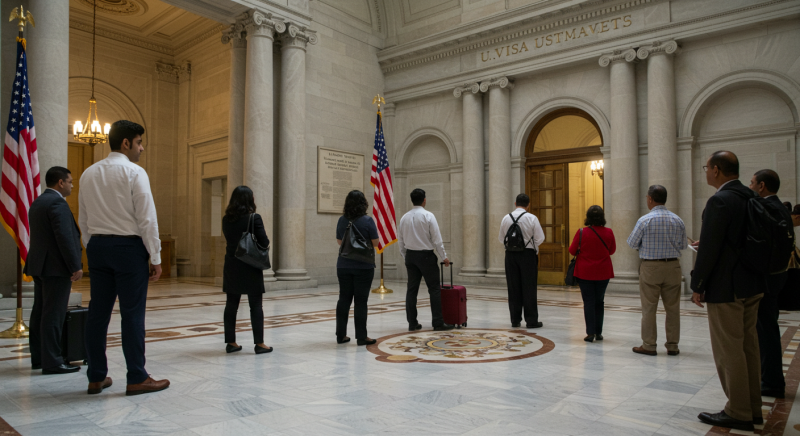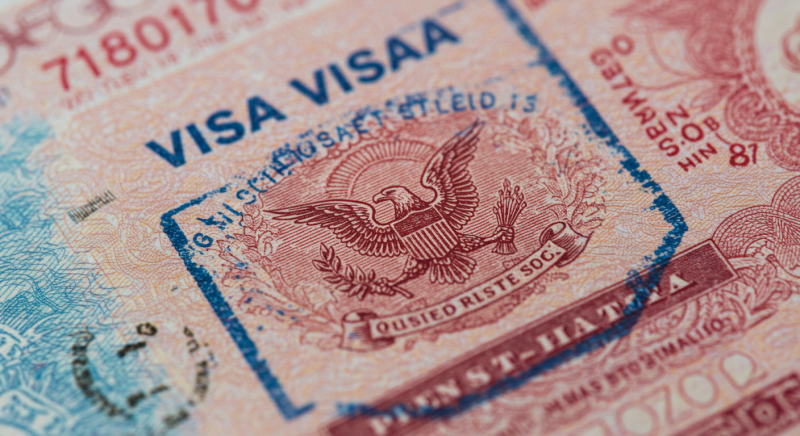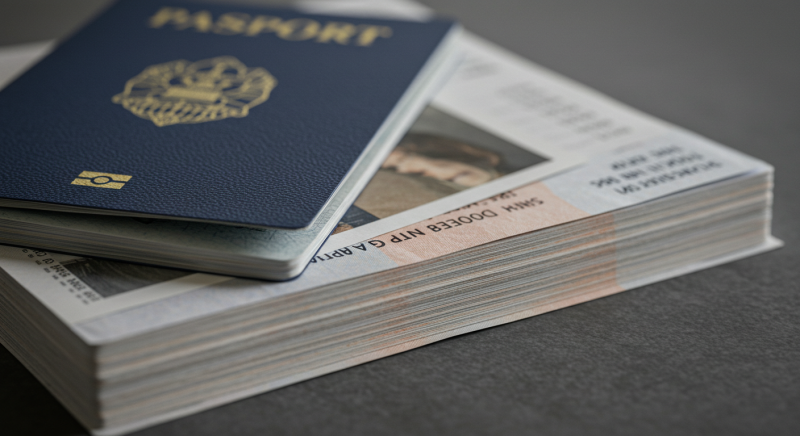Understanding the Requirement for Travel Visa for USA: A Step-by-Step Guide
In 2023, the U.S. Department of State processed over 10.4 million nonimmigrant visa applications, reflecting a 35% surge compared to pre-pandemic levels. For U.S. citizens planning international travel, understanding the requirement for travel visa for USA is critical, especially when guiding foreign relatives, friends, or employees through the process. This guide combines breaking updates with actionable steps to simplify visa requirements.
Key Takeaways
Navigating visa requirements involves identifying the correct visa type, preparing accurate documentation, and anticipating processing timelines. Recent policy changes, such as expanded interview waiver eligibility, have streamlined applications. Below, we break down each requirement for travel visa for USA, ensuring clarity for first-time applicants and seasoned travelers alike.

What Are the Primary Visa Types Under the Requirement for Travel Visa for USA?
The U.S. visa system is designed to accommodate a wide range of travel purposes, from short-term tourism to permanent residency. Understanding the requirement for travel visa for USA begins with identifying the correct visa category, as applying under the wrong type can lead to delays or denials. Below, we explore the most common visa classifications, their eligibility criteria, and recent policy updates to help applicants make informed decisions.
Nonimmigrant Visas: Temporary Stays
Nonimmigrant visas are for travelers entering the U.S. for a specific purpose and duration. In 2023, over 8.3 million nonimmigrant visas were issued globally, with B-1/B-2 visitor visas accounting for 43% of approvals.
1. B-1/B-2 Visitor Visas
Purpose:
- B-1: Business-related activities (e.g., conferences, contract negotiations).
- B-2: Tourism, medical treatment, or visiting family/friends.
Key Requirements:
- Proof of nonimmigrant intent: Demonstrate strong ties to your home country (e.g., employment, property, family) to ensure you’ll return after your stay.
- Financial stability: Bank statements, sponsorship letters, or income proofs showing you can cover trip expenses.
Recent Updates:
- Interview Waiver Expansion (2024): Applicants in 60+ countries (e.g., Japan, France) renewing B-1/B-2 visas within 48 months of expiration may skip in-person interviews.
- 10-Year Validity: Citizens of countries like Brazil and India are eligible for decade-long B-1/B-2 visas, streamlining repeat travel.
How to Apply:
- Complete the DS-160 form.
- Pay the $185 fee.
- Submit documents via the U.S. Visa Document Dropbox if eligible for an interview waiver.
2. F-1/M-1 Student Visas
Purpose:
- F-1: Academic studies at SEVP-certified institutions.
- M-1: Vocational or technical training.
Key Requirements:
- Form I-20: Issued by your U.S. school after admission.
- SEVIS Fee Payment: A $350 fee to fund the Student and Exchange Visitor Information System.
Post-Study Opportunities:
- Optional Practical Training (OPT): F-1 students can work in their field for up to 12 months post-graduation (36 months for STEM graduates).
2024 Policy Shift:
- Extended Visa Stamp Validity: Indian students now receive F-1 visas valid for up to 5 years, aligning with the duration of their academic programs.
3. H-1B/H-2B Work Visas
Purpose:
- H-1B: Specialty occupations requiring a bachelor’s degree (e.g., IT, engineering).
- H-2B: Seasonal non-agricultural work (e.g., hospitality, landscaping).
Key Requirements:
- Employer Sponsorship: A U.S. employer must file a petition (Form I-129) on your behalf.
- Labor Certification: Proof that no qualified U.S. workers are available for the role (H-2B only).
2024 Updates:
- H-1B Cap Exemptions: Workers at nonprofits, research organizations, or government agencies no longer count toward the annual 85,000 cap.
- H-2B Visa Lottery: A new randomized selection process aims to reduce fraud and delays.
Immigrant Visas: Permanent Residency
Immigrant visas grant permanent residency (Green Cards) to foreign nationals, often through family sponsorship, employment, or the Diversity Visa Lottery. In 2023, the U.S. issued 566,000 immigrant visas, with family-sponsored categories representing 65% of approvals.
Family-Sponsored Visas
- Immediate Relatives: Spouses, parents, and unmarried children under 21 of U.S. citizens (no annual cap).
- Family Preference Categories: Siblings and married children of citizens, subject to annual quotas.
Employment-Based Visas
- EB-1: Priority workers (e.g., researchers, executives).
- EB-2: Professionals with advanced degrees.
- EB-3: Skilled workers and laborers.
2024 Policy Highlight:
- Premium Processing Expansion: USCIS now offers 15-day processing for EB-1, EB-2, and EB-3 petitions for a $2,805 fee.
Specialized Visa Categories
- J-1 Exchange Visitor Visa: For au pairs, researchers, and cultural exchange participants.
- L-1 Intracompany Transferee: For employees transferring to U.S. branches.
- K-1 Fiancé(e) Visa: For partners of U.S. citizens to marry stateside.
Tools to Simplify the Requirement for Travel Visa for USA
- U.S. Visa Wizard: Match your travel purpose to the correct visa type here.
- Visa Wait Times: Check interview scheduling delays by embassy here.

Step-by-Step Guide to Fulfilling the Requirement for Travel Visa for USA
Navigating the requirement for travel visa for USA involves a structured process designed to ensure accuracy and compliance. Below, we break down each step in detail, incorporating the latest updates and practical tips to simplify your journey.
Step 1: Complete the DS-160 Form
The Online Nonimmigrant Visa Application (DS-160) is the cornerstone of the requirement for travel visa for USA. This form collects biographical information, travel plans, and security-related questions. Start by accessing the DS-160 portal on the U.S. Department of State’s website.
- Key Tips:
- Allocate 60–90 minutes to complete the form. Have your passport, travel itinerary, and previous visa details handy.
- Use the “Save” feature frequently to avoid timeouts. Each session generates a unique application ID for retrieval.
- Review entries meticulously—errors in passport numbers, employment history, or travel dates may trigger delays or denials.
After submission, you’ll receive a confirmation page with a barcode. Print this and retain it for your records, as it’s required for your interview.
Step 2: Pay Visa Fees
Visa fees vary based on the visa category and are non-refundable, even if your application is denied. For instance, B-1/B-2 visitor visas cost 185,whilepetition−basedvisaslikeH−1Bcost315.
- Payment Process:
- Visit the U.S. Visa Fee Payment Portal and select your location.
- Choose a payment method—options typically include bank transfers, credit/debit cards, or mobile wallets, depending on the country.
- Save the payment receipt. You’ll need the CGI reference number to schedule your interview.
Pro Tip: Double-check the fee amount for your visa type on the embassy’s website. Overpayments are rarely refunded, and underpayments will delay processing.
Step 3: Schedule Interviews
While interview waivers are now available for renewals in over 60 countries (e.g., Canada, Germany), first-time applicants generally require an in-person appointment.
- How to Schedule:
- Log into the U.S. Visa Information Service and select your embassy.
- Use your CGI reference number to book the earliest available slot. Wait times vary; for example, Mexico City currently averages 120 days, while London is 30 days.
- Expedited appointments are available for emergencies—contact the embassy directly for approval.
Interview Prep:
- Arrive 15 minutes early with your DS-160 confirmation, fee receipt, passport, and photo.
- Anticipate questions about your travel purpose, ties to your home country (e.g., employment, family), and financial stability.
Step 4: Compile Documentation
The requirement for travel visa for USA mandates thorough documentation to validate your application. Essential items include:
- Passport: Valid for at least six months beyond your stay. Include old passports if you’ve previously visited the U.S.
- Photo: A 2×2-inch color photo taken within six months, with a plain white background. Avoid glasses or headwear unless for religious purposes.
- Financial Proof: Bank statements, pay stubs, or sponsorship letters demonstrating you can cover trip costs. For students, include scholarship or loan documents.
- Travel Itinerary: Flight reservations (not tickets), hotel bookings, and a detailed agenda.
Special Cases:
- Students (F/M Visas): Submit an I-20 form from your U.S. institution and proof of SEVIS fee payment.
- Work Visas (H-1B, L-1): Include an approved I-129 petition and employer letters.
Step 5: Attend the Visa Interview
The interview is the final checkpoint in the requirement for travel visa for USA. Consular officers assess your eligibility in a brief 3–5 minute conversation.
- What to Expect:
- Questions focus on verifying your intent to return home (e.g., “What’s your job?” or “Who are you visiting?”).
- Submit fingerprints digitally before the interview.
- The officer will either approve your visa, request additional documents, or deny it under Section 214(b) (common for insufficient ties to home country).
Post-Interview:
- Approved visas are typically processed in 7–10 business days. Track your passport via the embassy’s courier service.
- If denied, review the refusal reason and reapply after addressing gaps (e.g., stronger financial proof).
Recent Updates (2024):
- Digital Document Uploads: Select embassies now allow uploading supporting documents online before interviews, reducing in-person paperwork.
- Extended Interview Waivers: Applicants renewing the same visa type within 48 months of expiration may skip interviews.
By following these steps and staying informed on policy changes, you’ll confidently navigate the requirement for travel visa for USA. For real-time updates, bookmark the Department of State’s Visa Page.

Recent Policy Changes Impacting Visa Requirements
The U.S. visa landscape is evolving rapidly, with post-pandemic reforms and technological advancements reshaping the requirement for travel visa for USA. Below, we unpack the most impactful updates, supported by data and actionable insights, to help travelers and sponsors navigate these changes confidently.
1. Consular Staffing Expansion to Reduce Processing Delays
In 2024, the Biden administration allocated $500 million to hire 1,200+ additional consular officers and modernize embassy systems. This investment aims to address pandemic-era backlogs, which peaked at 1.5 million pending visa applications in 2022.
Impact on Processing Times
- Nonimmigrant visa wait times have dropped by 32% in high-demand countries like India and Mexico. For example, B-1/B-2 interview appointments in New Delhi now average 250 days, down from 450 days in 2023.
- Student (F-1) and work (H-1B) visas are prioritized during peak seasons (May–August), with 85% of student visas processed within 30 days.
Key Takeaway
Check real-time embassy wait times here before applying. Early applications (6+ months before travel) are strongly recommended.
2. Expanded Interview Waiver Eligibility
To streamline the requirement for travel visa for USA, the Department of State has broadened interview waiver criteria. As of 2024, applicants in 62 countries can renew visas without an in-person interview if:
- They’re reapplying for the same visa type within 48 months of expiration.
- They have no prior refusals or security-related issues.
Countries Benefiting Most
- Mexico: Over 40% of B-1/B-2 renewals now qualify for waivers.
- Brazil: Applicants under age 20 or over age 55 are automatically eligible.
How to Apply for a Waiver
- Submit the DS-160 form and pay fees online.
- Use the Visa Document Dropbox to mail your passport and supporting documents.
- Track your application via the embassy’s online portal.
3. Auto-Revalidation for Short-Term Trips
A lesser-known but critical update allows certain visa holders to re-enter the U.S. after brief trips to Canada, Mexico, or adjacent islands without a valid visa stamp.
Eligibility Criteria
- Your original visa (even if expired) must be of the same type as your current status (e.g., H-1B, L-1).
- Your stay outside the U.S. does not exceed 30 days.
- You possess a valid I-94 arrival record and employment authorization.
Who Benefits?
- Business Travelers: Attend meetings in Toronto or Monterrey without visa renewal hassles.
- Students on OPT: Visit Cancun during academic breaks without jeopardizing F-1 status.
Limitations
Auto-revalidation does not apply to nationals of Iran, Syria, North Korea, or Sudan due to sanctions.
4. Digital Document Uploads and Biometric Advances
Select embassies, including those in the UK and Germany, now permit applicants to upload supporting documents (e.g., bank statements, invitation letters) via online portals before interviews. This reduces in-person paperwork and speeds up adjudication.
2024 Innovations
- Facial Recognition: Used at 90% of U.S. embassies to verify identities during interviews.
- e-Visa Stamps: Piloted in South Korea and Singapore, allowing digital visa issuance within 72 hours.
5. Stricter Scrutiny for High-Risk Categories
While many reforms ease the requirement for travel visa for USA, the Department of Homeland Security has intensified vetting for:
- H-1B Applicants: Employers must now submit annual audits proving compliance with wage laws.
- Visa Waiver Program (ESTA) Travelers: Overstays or minor criminal records (e.g., DUIs) now trigger automatic ESTA revocation.
2024 Denial Rates
- H-1B denials rose to 18% (up from 12% in 2023), primarily due to wage discrepancies.
- ESTA rejections increased by 22%, affecting 34,000 travelers.
6. Fee Adjustments and Refund Policies
Effective January 2024, visa fees increased by 6–12% to offset processing costs. Notable changes:
- B-1/B-2 Visa: 185➔200
- F-1 Visa: 350➔375 (includes SEVIS fee)
- Premium Processing (H-1B): 2,500➔2,805 for 15-day adjudication.
Refund Exceptions
Fees are non-refundable except in rare cases, such as embassy-caused delays exceeding 180 days.
Key Takeaways
- Plan Ahead: Use embassy wait time tools to avoid last-minute delays.
- Leverage Waivers: Renew visas via dropbox if eligible to skip interviews.
- Stay Informed: Bookmark the Department of State’s Visa Updates for real-time policy changes.
These reforms reflect a dual focus on security and efficiency in the U.S. visa process. By aligning your application strategy with the latest requirement for travel visa for USA, you can minimize hurdles and focus on your travel goals. For complex cases, consult an immigration attorney through the American Immigration Lawyers Association.
Avoiding Common Pitfalls in the Visa Process
- Incomplete Forms: Double-check entries for typos in names and dates.
- Insufficient Financial Proof: Demonstrate funds covering travel, accommodation, and daily expenses.
- Overlooking Interview Prep: Practice answering questions about travel intent and ties to your home country.
Conclusion
Understanding the requirement for travel visa for USA ensures smoother applications and avoids delays. Stay updated on policy shifts via the Department of State’s website and consult legal experts for complex cases.
FAQ Section
Q1: How long does visa processing take?
Processing varies by embassy and visa type. Check real-time estimates here.
Q2: Can I apply for a U.S. visa from another country?
Yes, but you must prove residency in that nation.
Q3: What if my visa is denied?
Applicants receive a denial reason under Section 214(b) of the Immigration and Nationality Act. Reapply after addressing the issue.
read more How to Successfully Navigate the Immigration Process from Nigeria: 5 Step-by-Step Guide
